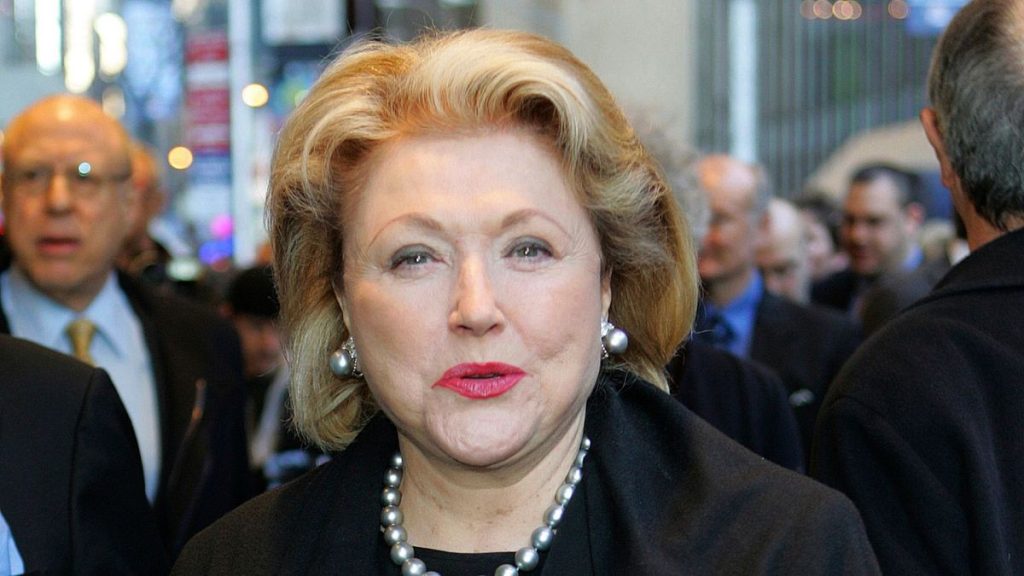Barbara Taylor Bradford, the acclaimed British author, known for her monumental work “A Woman of Substance,” which marked the inception of her literary career in 1979, has passed away at the age of 91. Her death occurred in New York City, as confirmed by a spokesperson. Over the decades, Bradford established herself as one of the world’s preeminent authors, writing more than a dozen novels that sold upwards of 90 million copies globally. Her recognition soared in 1999 when her visage graced a postal stamp, and her contributions to literature were acknowledged with an OBE from Queen Elizabeth II in 2007. Bradford’s success extended beyond mere book sales, as she became a cultural icon, with her literary themes, particularly relating to women overcoming societal obstacles, resonating with a vast audience.
Bradford was born in Leeds, West Yorkshire, to a working-class family, the only child of her parents. She discovered her passion for literature early on, defying her family’s expectations by beginning her career as a reporter at the Yorkshire Evening Post at the young age of 16. This initial foray into journalism led to various roles, including a fashion editorial position at Woman’s Own Magazine and working as a columnist for the London Evening News. However, her enduring dream was to become a novelist. “A Woman of Substance,” a sweeping narrative about the life and trials of retail powerhouse Emma Harte, cemented her status as a literary giant, selling over 30 million copies and inspiring a successful television miniseries in 1984.
Bradford’s characterizations often reflected her own experiences. She admitted that Emma Harte was a testament to her tough and resilient nature as a businesswoman. The author found substantial parallels between her life and that of her fictional creation, from overcoming personal challenges to navigating the complexities of family secrets. Notably, she discovered through her biographer that her mother was born out of wedlock and that her maternal grandfather might have been the second Marquess of Ripon, revealing layers of her own lineage and contributing to her deep understanding of women’s struggles throughout history. This connection to historical narratives was a defining element of her work, which often highlighted strong women as central figures.
Bradford maintained a disciplined writing routine, dedicating long hours to her craft. She was known for her unwavering focus, working daily from 6 a.m. to 6 p.m. behind her IBM Lexmark typewriter. This diligence paid off as she enjoyed the benefits of her success, including opulent living arrangements, illustrated by her luxurious Manhattan apartment overlooking the East River, which she listed for sale in 2010 at nearly $19 million. Notably, in 2013, the apartment sold to actress Uma Thurman for $10 million, demonstrating the high-profile nature of her life.
Throughout her prolific career, Bradford mingled with numerous celebrity figures, showcasing her fascinating life beyond the written word. Among her memorable encounters was her friendship with the legendary Sean Connery prior to his iconic role in his first James Bond film. With a mixture of charm and foresight, she advised him to moderate his Scottish accent to enhance his commercial viability—advice he ultimately did not heed. These experiences allowed her to gather numerous anecdotes that not only enriched her life but perhaps influenced her characterizations and storytelling style.
In her rich literary journey, Bradford not only crafted stories that captivated readers but also epitomized the challenges women faced in a patriarchal world. She championed stories of resilience, ambition, and the quest for love and power, themes that solidified her legacy as a pioneer of women’s fiction. Bradford’s works remain a testament to her understanding of human emotion and complexity. Her passing marks the end of an era for contemporary literature, leaving behind a vast oeuvre that will continue to inspire future generations of readers and writers. The impact of her narratives will resonate for years to come, as they provide insight into the landscape of women’s experiences across different eras and societal frameworks.














